Elk Mountains' Highest Peaks
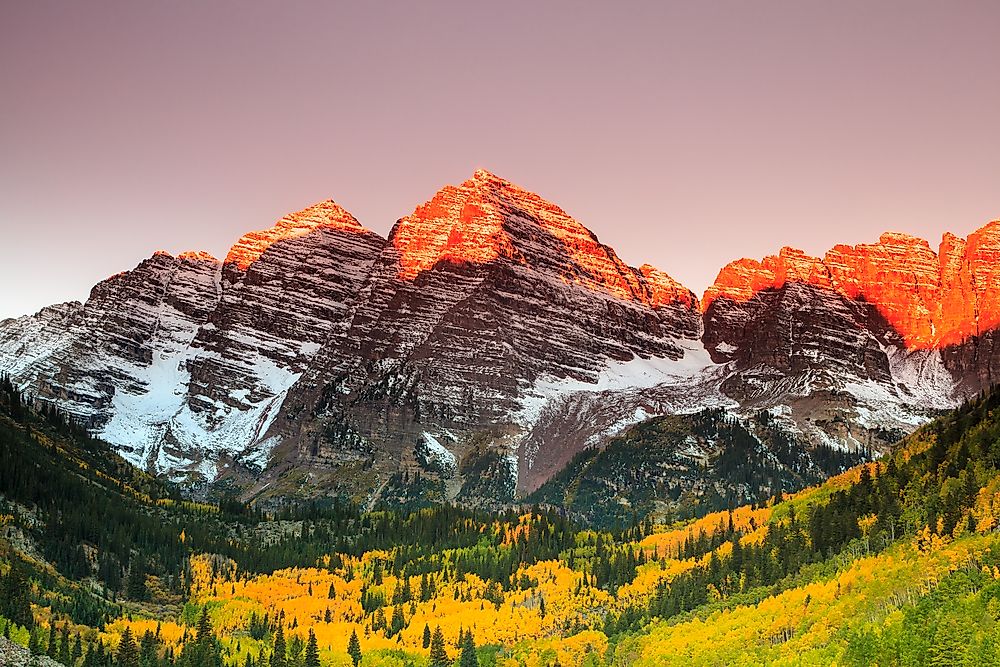
Located in the Rocky Mountains in the western central parts of Colorado, Elk Mountains have some of the highest and most rugged peaks. The Elk Mountains sit on the northern side of Gunnison counties, mainly in southern Pitkin and on the west part of the continental-divide. The mountain range stretches to the eastern side of the River Crystal, south of River Roaring fork, and the south-west region of Aspen. The more significant part of the mountains is within the Ragged and Maroon Bells-Snowmass Wilds, the White River National Forest, and Gunnison National Forest. The mountain ranges rise over 9,000 feet over the Roaring-Fork Valley on the northern side. These peaks provide a frightening barrier, and it is only traversed through the back-road trails and passes including Taylor and Pearl passes. The ranges are famous regions for mining activities ever since the Colorado silver boom era which resulted in the formation of Ashcroft and Aspen mining towns. During the 19th century, the southern and western flanks of the mountains were coal mining locations which continue to date.
6. North Maroon Peak (14014 ft)
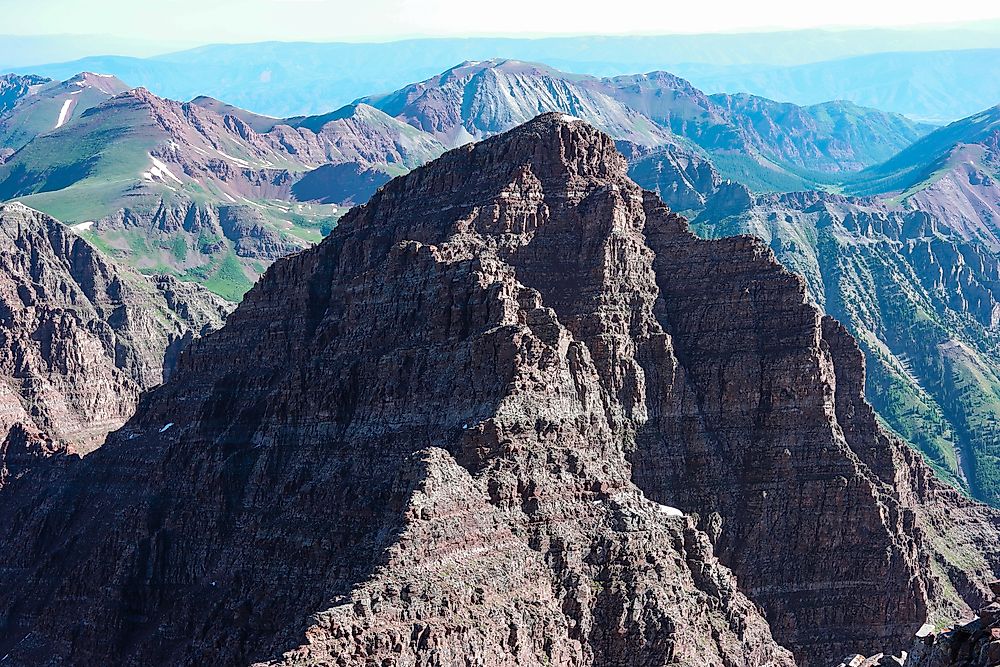
The North Maroon peak is 14,019 ft high and the 50th highest peak in Colorado. The mountain is located about 12 miles from Aspen, right between Pitkin and Gunnison counties. The summit features an 8 mile trail with beautiful flowers which is recommended for experienced hikers. The path is perfect for trailing from June to November. The peak is composed of granites and limestone which harden over time to create a rock. The mudstone contains the granites and limestone which fractures easily, making the trek extremely risky.
5. Pyramid Peak (14018 ft)
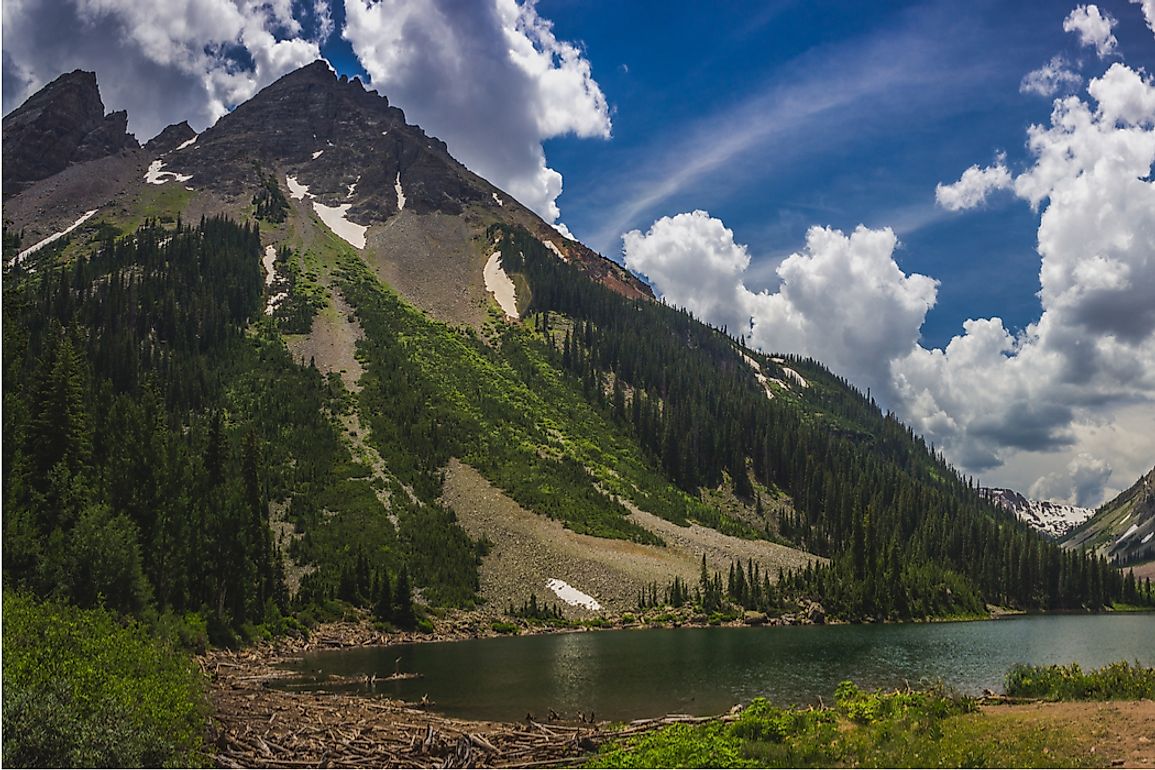
Pyramid Peak is a 14,018 feet tall mountain in Colorado. The pyramid is the 47th highest in the state and the 78th tallest in the United States. The peak is in the southeast region of Pitkin county about 12 miles from Aspen. The mountain resembles a square-pyramid and it is visible from the Roaring Fork River Valley along the Maroon Creek Canyon. Compared to other ranges in Colorado, especially Mount Elbert, the Pyramid Peak is extremely steep. The typical mountain climbing treks are the northwest (also referred to as Keyhole Route) and northeast pyramid ridges. These routes are characterized by loose rocks and high exposure, plus it is quite hard to find the trail especially the northwest ridge. Therefore these two paths are the most dangerous and difficult routes of all the standard trails in the Elk Mountain.
4. Snowmass Mountain (14092 ft)
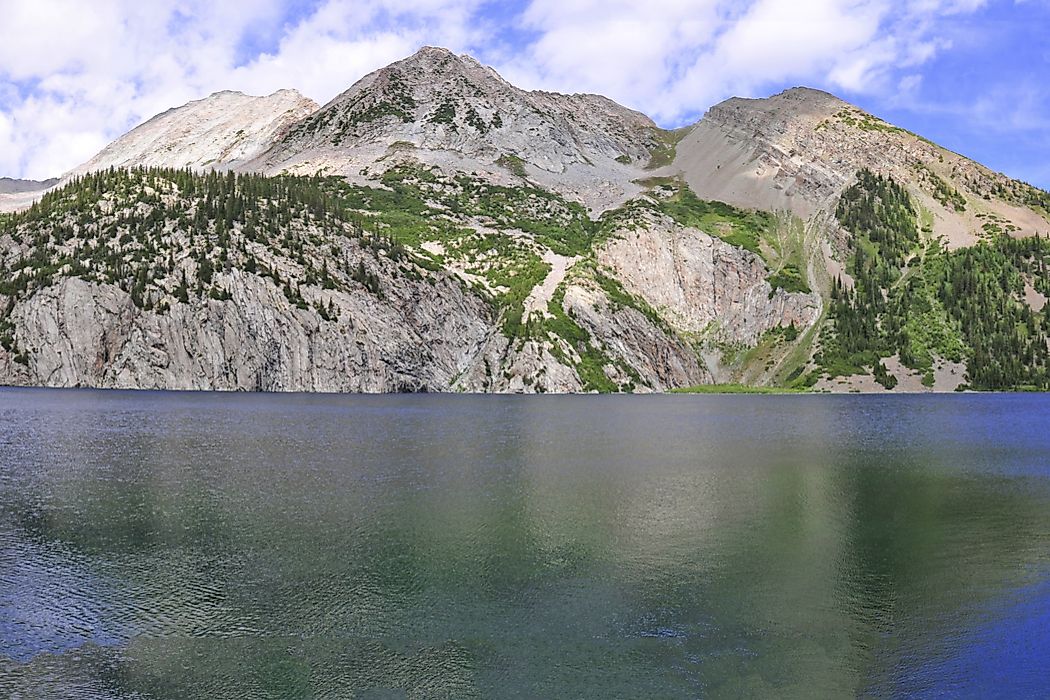
Snowmass is a 14,092 foot peak, and the 35th highest mountain in Colorado. Situated on Elk Mountain in the Maroon Bells-Snowmass Wilderness, this summit lies on the borders between Gunnison and Pitkin counties. The ranges are named after snowfield located on the eastern slopes. The best route for hikers climbing the mountain is the famous Snowmass Creek, which begins from the car parking region. The trek is approximately 8.1 miles long and all hikers trek to the lake where they camp before proceeding the next day to the top. The Snowmass approach is perfect for early summer and spring when snow covers the entire region; however, one has to make sure they have an ice-axe if they are planning to climb to the summit. Experienced hikers can climb the mountain from Lake Geneva through the western side of the hill. Hikers can access Lake Geneva from the northern folk of River crystal.
3. Capitol Peak (14130 ft)
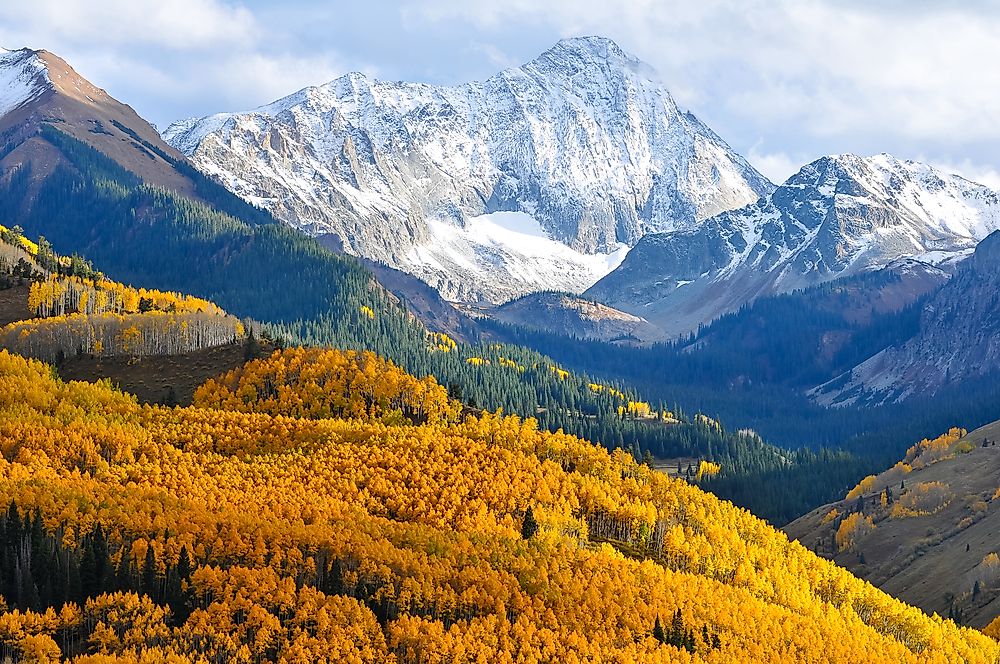
Capitol Peak is one of the fourteener mountain peaks in the Elk Ranges of the Rocky Mountains. The 14,137ft summit is in the Maroon Bells-Snowmass Wilderness of the White River National Forest about 8.7 miles from Redstone, Pitkin County. Capitol Peak is on the Long Ridge which connects Mount Sopris to the heart of the Elk mountains. Capitol Peak is the hardest Colorado fourteener to climb, and the non-technical route on the northeastern ridge demands that the hikers cross the exposed Northwest Capitol ridge. All the other treks require some technical climbing like the Buttress route which has a lot of loose rocks.
2. Maroon Peak (14156 ft)
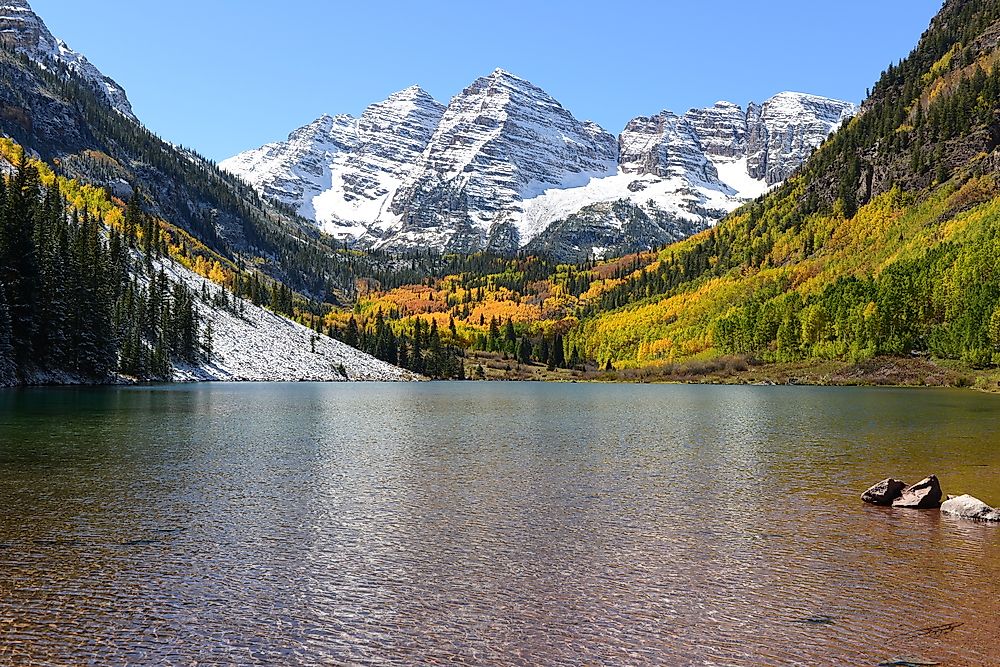
Maroon Peak which is about 14,156 ft high is the 27th highest peak in the state of Colorado. Maroon Peak is situated in the Maroon Bells-Snowmass Wilderness in the White River National Forest. Unlike all the other ranges in the Rocky Mountains which are made of limestone and granites, the Maroon Bells, composed of Maroon Peak and North Maroon Peak, have a metamorphic, sedimentary mudstone which hardened over the years into a rock. The mudstone fractures easily and can be extremely dangerous and they are responsible for the unique maroon color of the summits. The peaks got their name ‘’deadly’’ in 1965 when five separate accidents resulted in the death of eight people. The Bells are a famous destination with overnight and day visitors; more than 300,000 tourists visit the peaks every season.
1. Castle Peak (14265 ft)
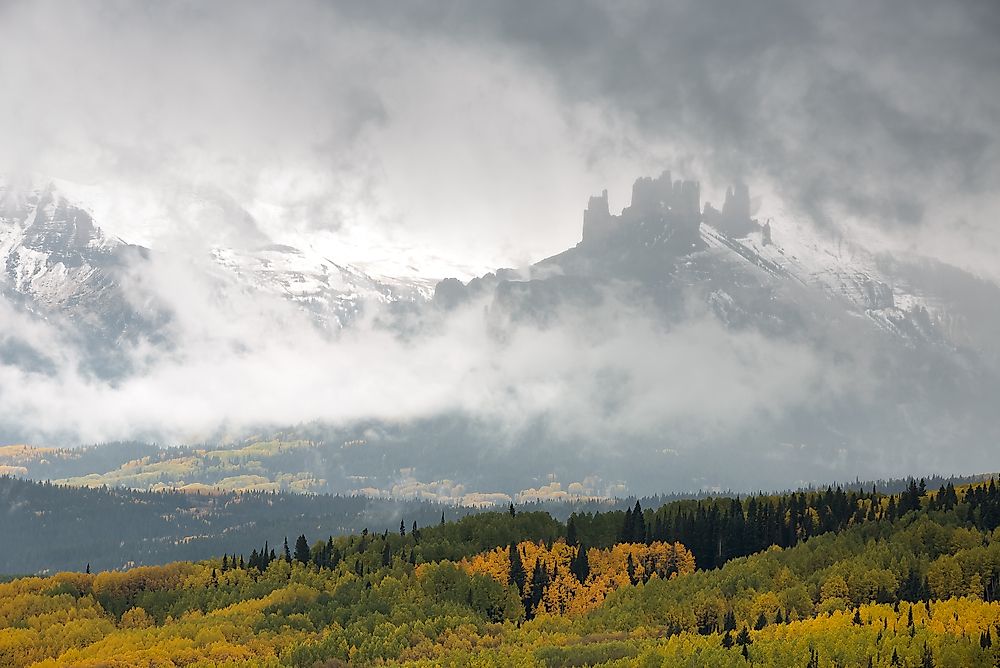
The Castle Peak is the 9th highest peak of the Rocky Mountain ranges of North America and Colorado. The prominent 14,265 ft summit is the highest peak on the Elk Mountains and the Maroon Bells-Snowmass Wilderness. Castle Peak is situated about 11.6 miles northeast of Crested Butte town, Colorado right on the drainage divide which separates the Gunnison County and Gunnison National Park from Pitkin County and White Forest National Park. Castle Peak is the highest in both counties. The peak obtained its name from its castellated peak. The best climbing time is from June to September right through the permanent snowfield, called Montezuma glacier, which is located between the Conundrum and Castle Peaks. When climbing the summit, one can either use the Northwest Ridge or the Northeast Ridge. The Northeast ridge has an easy snow climb, but it is slightly harder scrambling and finding the route once one get at the ridge. The Northwest ridge has a moderate slow climb and a simple ridge scramble although one should not try to climb late in the summertime.











